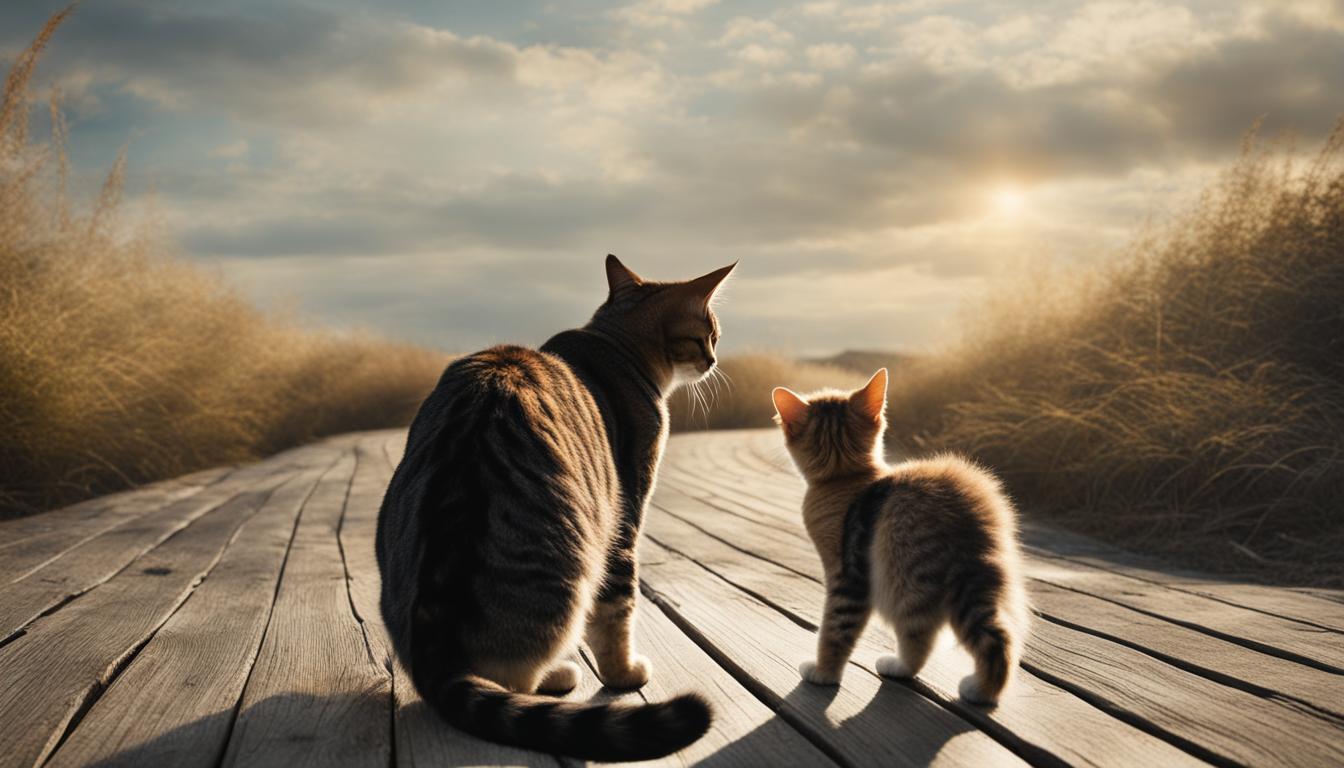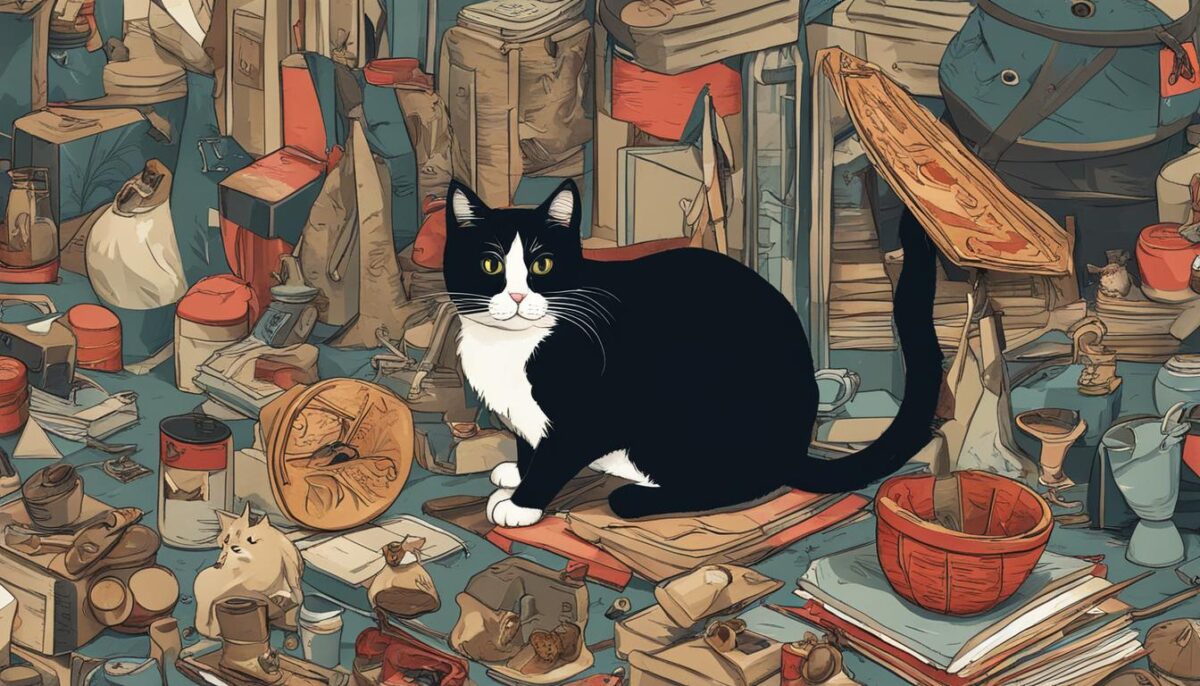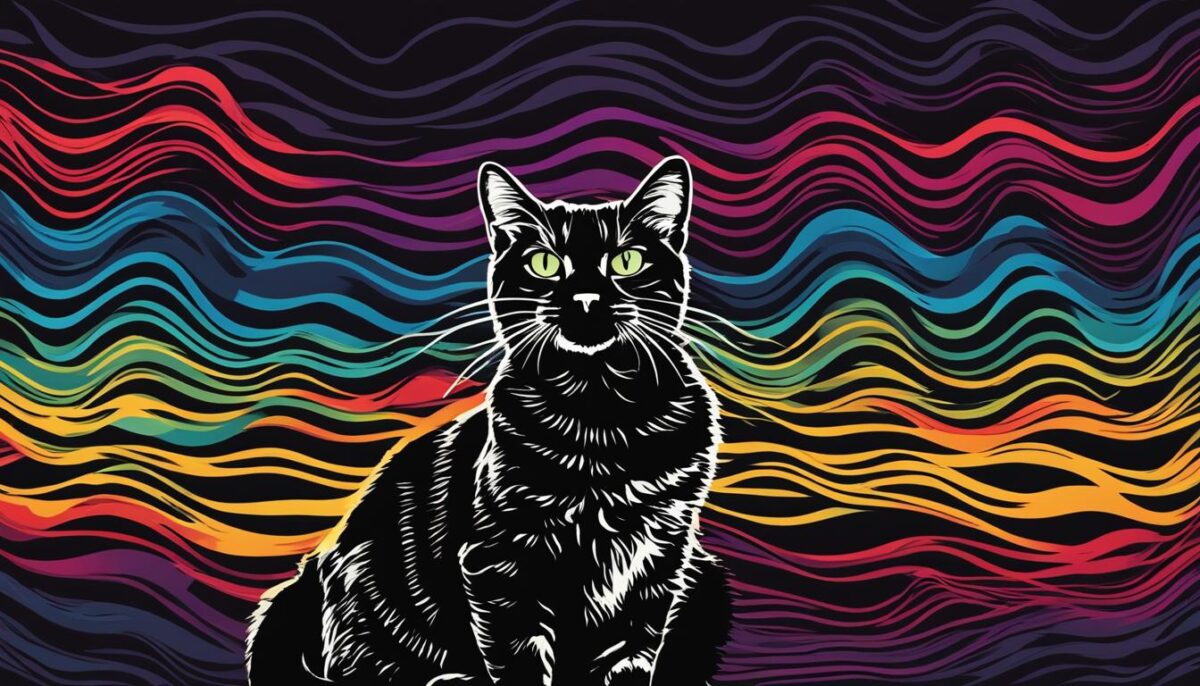Have you ever wondered why your cat meows at you? It’s their special way to talk! Cats use meows, purrs, and other sounds to say hello, ask for things, or show how they’re feeling. Just like you talk with friends, cats use their cat language to chat with us and other animals. Not all cats are the same; some love to talk more than others!
Your cat’s meows are just for you. While you might use words, they use sounds and body moves to talk. If you listen and watch, you can learn what your kitty’s trying to say. It could want a snack or a cuddle or just saying hi! Learn the cool way of understanding cats and become the best of friends.
Key Takeaways
- Cats meow to chat with people, not with other cats.
- Each cat has its own way of using feline vocalizations.
- Understanding why cats meow helps us know what they need.
- Different cat breeds have their unique cat communication styles.
- By learning about cat language, we become better cat buddies.
The Silent Language: Understanding Your Cat’s Meows
Did you know that when your cat meows, they are really trying to talk to you? Yes, it’s true! Cats use meowing as a special way to chat with their human friends. Let’s dive into the world of cat meowing and discover what your furry companion is trying to say!
Meowing as a Tool for Human Interaction
Cats often meow to get our attention. They might be saying “hello” or maybe asking for something. Unlike with other cats, where they stay mostly quiet, our kitties use cat-human interaction to tell us about their day or that it’s time for a yummy dinner.
The Variation of Meows and Their Meanings
Each meow can be different, kind of like words in our language. A soft meow might mean your cat is happy and just saying hi, while a loud meow could mean “Hey, look at me!” or “I’m very hungry!” By listening to these feline sounds, you can become a great cat listener!
Why Kittens Meow: Developing Communication Skills
Little kitties, called kittens, start meowing a lot when they are small. This is how they begin to learn kitten communication. They meow at us to tell us they need some care or just some playful time. Every peep and squeak helps them grow into chatty cats!
If you pay close attention to the meows, you’ll start to understand your cat’s secret language—cat language. Just like you know when your friend is joking or serious by how they talk, you can learn what your cat’s meows mean too!
Why Do Cats Meow
Have you ever wondered why your cat meows? Maybe they meow at you when you come home, or when it’s time for dinner. Cats make noises, like meows, to talk to us. It’s their way of communicating needs and feelings.
When cats meow, they are sending us meow signals. If your cat meows loudly, maybe they’re saying, “I’m very hungry!” Or if they give a soft meow, they might want some petting or just to say hello. Cats have all kinds of reasons for meowing.
Cats also make different cat noises to tell us different things. They have a special language, called cat vocalizations, that they use to communicate. When you listen closely, you can start to understand what they need or want.
- If your cat meows at the door, maybe they want to go outside.
- When they meow at their bowl, they are probably hungry.
- If they meow and roll over, they could be asking for a cuddle.
Learning what your cat’s meows mean helps you know what they need. This keeps your cat happy and feeling loved. So the next time your cat meows at you, remember they’re trying to send you a message!
Purring, Growling, and Hissing: Deciphering Feline Moods
Have you ever listened closely to your cat? They make all sorts of sounds that tell you how they’re feeling. It’s like they have their own special language. Let’s learn together what these cat noises really mean!
The Purr-fect Sound: Contentment or Pain?
When your cat is curled up on your lap, purring away, they might be showing they’re happy and comfy. But, did you know that sometimes they purr when they’re not feeling very good? Yes, it’s true! A purr can also mean your kitty might need some extra love or even a trip to the vet.
Defensive Chatter: Growls and Hisses Explained
Sometimes your cat might make growls and hisses. This can be a little scary, but really it’s their way of saying they need some space. It’s like putting up a “Do Not Disturb” sign. They might feel scared or just don’t want to be bothered. Here’s a helpful table to understand what your cat’s sounds might mean:
| Sound | Meaning | When You Might Hear It |
|---|---|---|
| Purring | Happy or in pain | When petted or not feeling well |
| Growling | Upset or scared | New pets in the house or during a vet visit |
| Hissing | Very scared or defensive | If they’re surprised or feel threatened |
Remember, the more you listen to these cat emotions and sounds, the better you’ll understand your furry friend. And the better you understand them, the happier you both will be!
The Fascinating World of Feline Vocalizations
Have you ever heard your cat make sounds that you just don’t understand? Don’t worry, you’re not alone! Cats have a secret language all their own. Let’s learn about some special sounds cats make and what they might mean.
Cats Who Yowl: Stress or Seeking Attention
Sometimes, a cat will make a long, loud sound called a yowl. When you hear a cat yowling, it might be because they are feeling lonely or they might be asking for your attention. It’s like they are saying, “Hey, look at me!” or “I need something!” Imagine if you could only talk with music, a yowl might be a cat’s way of singing a song to tell you how they feel.
Chattering and Chirruping: Signs of Feline Focus
Another set of sounds that cats make are chattering and chirruping. Have you seen your cat watching birds outside the window, making a funny chirping sound? This means they are excited or focused on something. Maybe they’re thinking, “Wow, that bird looks interesting!” These sounds show just how much your cat pays attention to the world around them. It’s their way of saying they’re on the hunt, even if it’s just from inside the house.
- Chattering is when your cat makes quick, repeated sounds.
- Chirruping is like a mix between a meow and a purr. It’s a happy, friendly sound!
Understanding the sounds your cat makes, like a cat yowling or chirping, helps you know how they feel and what they need. So, next time you hear these sounds, remember, your cat is trying to talk to you in their own special way. Listen closely, and you’ll get better at speaking ‘cat’ every day!
How Breed and Age Influence Cat Communication
Did you know that Siamese and Persian cats have their own special sounds? Siamese kitties are often very vocal cats that like to tell you all about their day with lots of breed-specific meows. Persian cats can be more quiet and gentle with their voices.
As your furry friends get older, they may begin to meow more. This could happen because aging cats might not hear as well or they could be a little confused. It’s important to pay attention to their sounds so you can understand their needs better.
Let’s look at how cat communication differences come into play with age and breed:
| Breed | Typical Vocalization | As They Age |
|---|---|---|
| Siamese | Very talkative, loud meows | May become even more vocal |
| Persian | Quiet and soft-spoken | Meows may increase due to hearing loss or confusion |
| Mixed Breed | Varies greatly | Depends on individual health and personality |
Understanding the way cats talk can help you take better care of them. You’ll know if they’re just saying hello or if they really need your help! Remember to listen and learn from your amazing cat friends.
Conclusion
When we spend time with our cats, we learn that each purr, meow, and little sound is their way of talking to us. Like learning a secret code, understanding cat meows helps us be attentive cat owners. Each noise your cat makes is like a secret message that helps you know what they need or how they feel. This makes the bond you have with your cat stronger.
Caring for cats is not just about giving them food or a cozy place to nap. It’s also about listening to them. When your cat meows at you, they might be asking for a treat or just saying hello! By being a responsive cat communication partner, you make sure your cat is happy and loved. It’s your job to listen and try your best to understand.
Remember, every cat is special and has their own way of saying things. Your cat’s sounds are not just noise; they are their way of sharing their world with you. So next time you hear a meow, listen closely, because that’s your fluffy friend trying to chat with you!
FAQ
What are the different types of feline vocalizations?
Cats use a variety of vocalizations to communicate, including meows, purrs, growls, hisses, yowls, chatters, and chirrups. Each sound can convey a different message or emotion from the cat.
How do cats use meowing to interact with humans?
Cats meow primarily to communicate with humans, not other cats. They may meow to greet us, request things like food or attention, and convey their feelings or desires.
What do different meows mean?
Different meows can indicate various needs or emotions. Short meows might be greetings, mid-pitched meows often mean a request for something, and long, drawn-out meows can indicate distress or annoyance.
Why do kittens meow more often than adult cats?
Kittens meow to draw attention and communicate with their human caretakers as they develop their communication skills. This behavior is reinforced when humans respond to their needs, creating a pattern of meowing for interaction.
What circumstances would cause a cat to purr?
Cats typically purr when they’re content and relaxed, but they can also purr when in pain or distressed to soothe themselves, which is why it’s essential to understand the context of their purring.
What does it mean when a cat is hissing or growling?
Hissing or growling is often a defensive response and a sign that a cat feels threatened or scared. It’s a warning to back off and give the cat space.
Can you tell what a cat needs by its yowl?
A yowling cat might be experiencing stress, seeking attention, or communicating a specific need such as hunger or the desire to mate. Observing the cat’s other behaviors and environment can help determine the cause of the yowl.
What does it mean when a cat chatters or chirps?
When a cat chatters or chirps, it’s usually a sign of excitement or frustration, often observed when a cat is watching birds or other prey animals that it can’t reach.
Does the breed of a cat affect how much it meows?
Yes, some breeds, like Siamese and Persian cats, are known to be more vocal and may meow more frequently or have distinct types of meows compared to other breeds.
Why might an older cat meow more than a younger cat?
As cats age, they might meow more due to various reasons such as hearing loss, decreased vision, or even cognitive changes that can make them feel disoriented or anxious.


